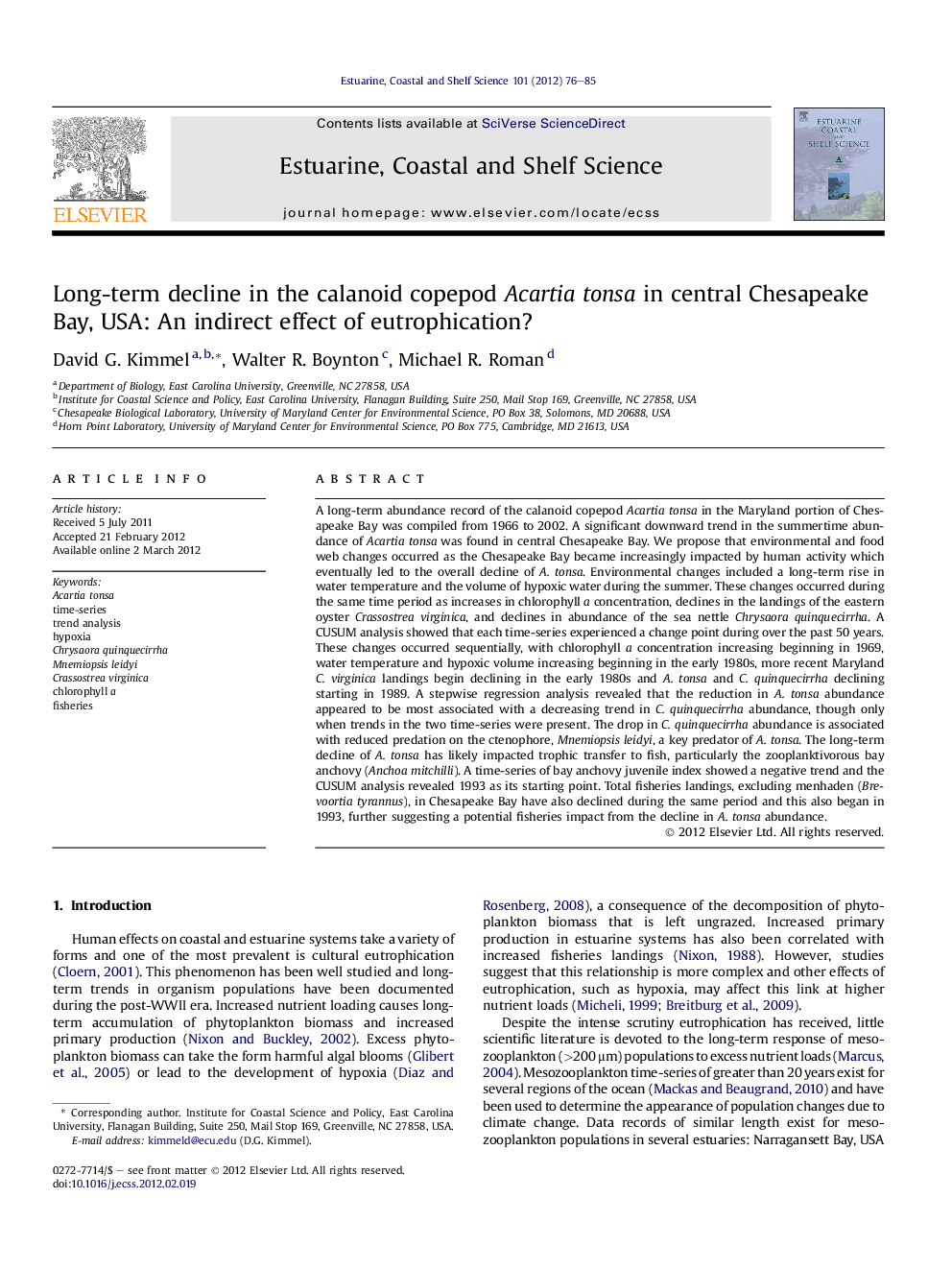| کد مقاله | کد نشریه | سال انتشار | مقاله انگلیسی | نسخه تمام متن |
|---|---|---|---|---|
| 4540242 | 1626692 | 2012 | 10 صفحه PDF | دانلود رایگان |

A long-term abundance record of the calanoid copepod Acartia tonsa in the Maryland portion of Chesapeake Bay was compiled from 1966 to 2002. A significant downward trend in the summertime abundance of Acartia tonsa was found in central Chesapeake Bay. We propose that environmental and food web changes occurred as the Chesapeake Bay became increasingly impacted by human activity which eventually led to the overall decline of A. tonsa. Environmental changes included a long-term rise in water temperature and the volume of hypoxic water during the summer. These changes occurred during the same time period as increases in chlorophyll a concentration, declines in the landings of the eastern oyster Crassostrea virginica, and declines in abundance of the sea nettle Chrysaora quinquecirrha. A CUSUM analysis showed that each time-series experienced a change point during over the past 50 years. These changes occurred sequentially, with chlorophyll a concentration increasing beginning in 1969, water temperature and hypoxic volume increasing beginning in the early 1980s, more recent Maryland C. virginica landings begin declining in the early 1980s and A. tonsa and C. quinquecirrha declining starting in 1989. A stepwise regression analysis revealed that the reduction in A. tonsa abundance appeared to be most associated with a decreasing trend in C. quinquecirrha abundance, though only when trends in the two time-series were present. The drop in C. quinquecirrha abundance is associated with reduced predation on the ctenophore, Mnemiopsis leidyi, a key predator of A. tonsa. The long-term decline of A. tonsa has likely impacted trophic transfer to fish, particularly the zooplanktivorous bay anchovy (Anchoa mitchilli). A time-series of bay anchovy juvenile index showed a negative trend and the CUSUM analysis revealed 1993 as its starting point. Total fisheries landings, excluding menhaden (Brevoortia tyrannus), in Chesapeake Bay have also declined during the same period and this also began in 1993, further suggesting a potential fisheries impact from the decline in A. tonsa abundance.
Journal: Estuarine, Coastal and Shelf Science - Volume 101, 10 April 2012, Pages 76–85